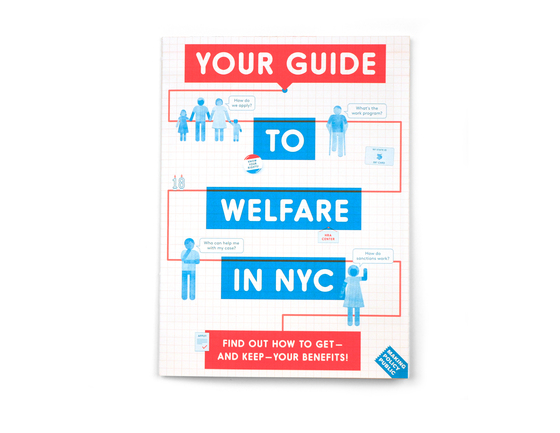For nearly 350,000 New Yorkers, public assistance is vital lifeline for staying sheltered and fed. But wading through the maze of paperwork and appointments required to apply for benefits is an intimidating process. And applying is just the beginning: to keep their benefits, applicants have to keep track of regular appointments, complicated paperwork, and strict work requirements. If applicants have trouble navigating this system on their own, they risk missing out on the benefits they depend on to get by.
CUP, the Safety Net Project of the Urban Justice Center, and design studio All Other Services joined forces to create a fold-out poster that breaks down how to apply for and keep public assistance. Your Guide to Welfare in NYC is the first guide of its kind to present all of the information public assistance applicants need together in one place. Each part of the application process is visualized in easy-to-follow steps, including the kind of documents you need to apply and what to expect at benefits appointments. Information on how to deal with application problems is also included, so people can be prepared to protect the benefits they need to survive.
For the launch of Your Guide to Welfare in NYC, CUP and the Safety Net Project held a special event with NYC’s Human Resources Administration (HRA), the organization that administers public assistance. HRA Commissioner Steven Banks addressed a crowd of reporters, public assistance recipients, and advocates, highlighting how important Your Guide to Welfare in NYC will be to helping people get the benefits they depend on for survival. Safety Net Project client Wendy O’Shields also spoke, highlighting the difficulties she experienced while applying for public assistance for the first time during the recession. The poster, she said, represented “a blueprint for public assistance in 2015 and I hope it will be widely distributed!”
A Spanish version of the MPP was launched in 2015. You can get your Spanish copy here.







